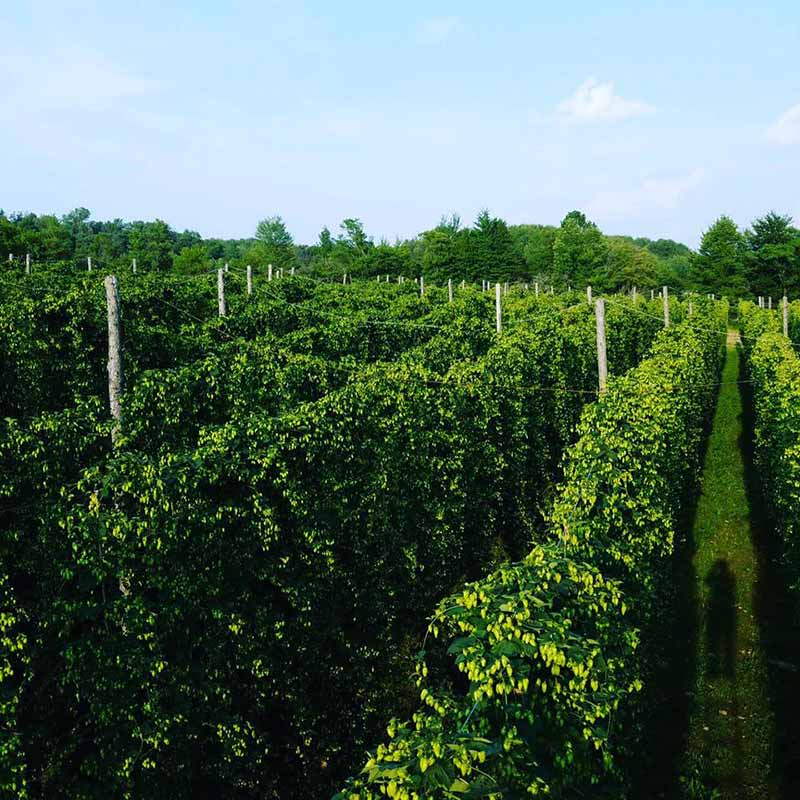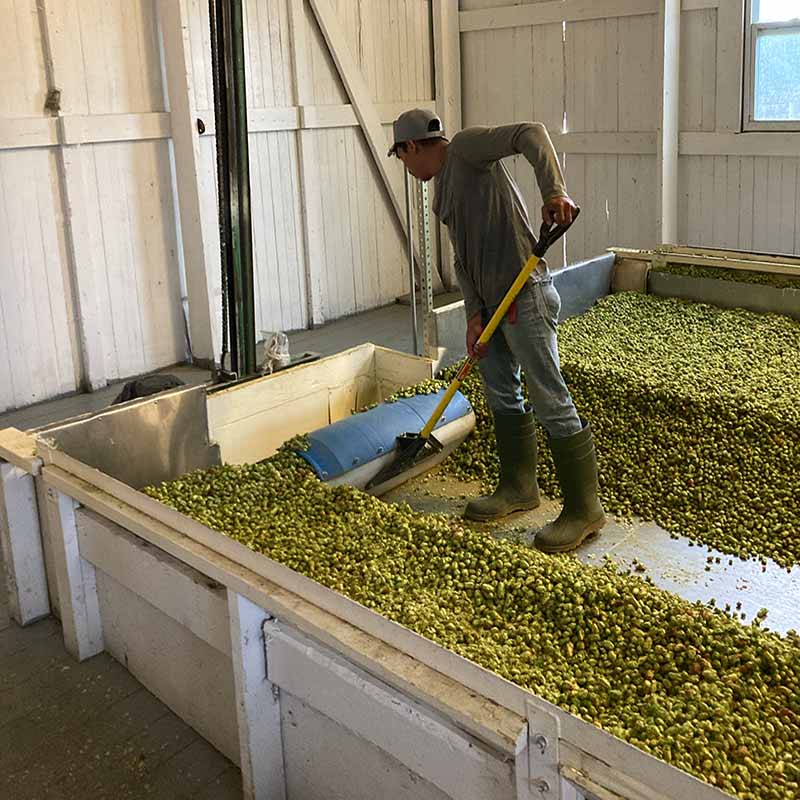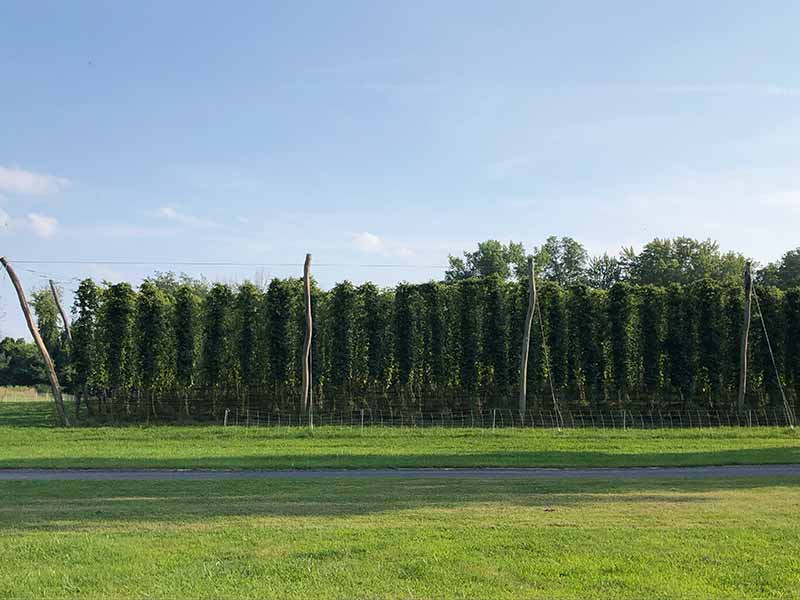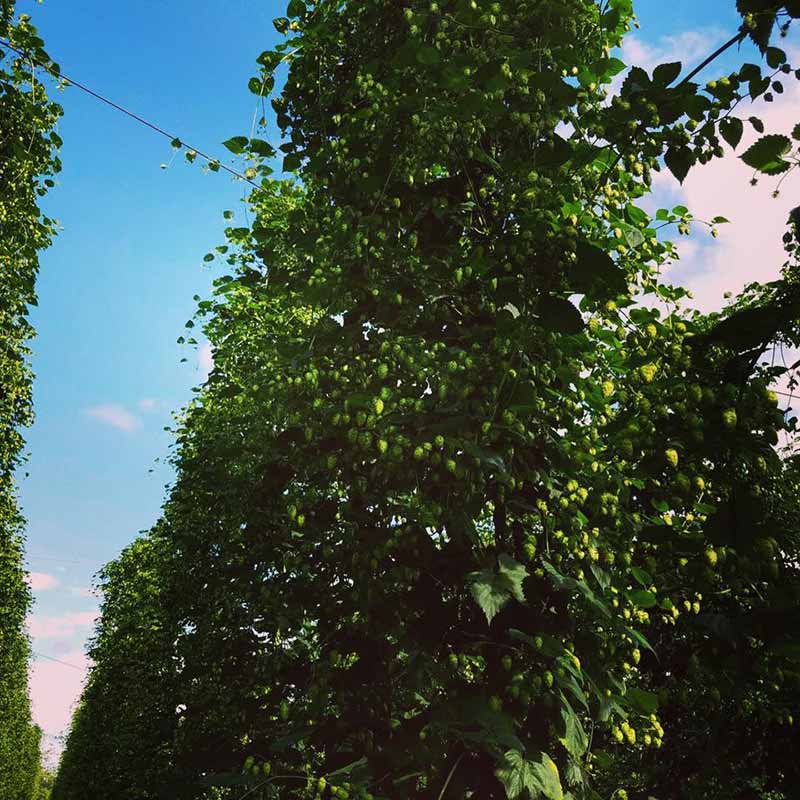
It’s hard to envision the craft beer movement taking off without the help of the classic “C” hops: Columbus, Chinook, Centennial, and Cascade. While they dominated the early days of craft beer in the U.S., brewers still find ways to incorporate them with new-school hops. We wrote how Centennial hops still shine bright in beers today. Now, we’re going to take a closer look at Cascade.
“Personally, I think Cascade is overlooked a lot,” says Chris Holden, co-owner of New York-based The HOPGUILD, producers of New York Cascade hops.
We chatted with Holden and Prison City Brewing Lead Brewer Tony Cordova to learn more about Cascade’s ancestry and analytics, the characteristics that pop, when to use the hop, and in which beers.
(Above photography courtesy of the HOPGUILD)
Better Production and Enable More Sales With Ollie
Discover how breweries all over are making operations a breeze and enabling more sales with Ollie!
Ready to learn more? Drop us a line and our team will be in touch with more information on how to check out a demo of Ollie.
What Is the Ancestry and Analytics of Cascade Hops?

Photography courtesy of the HOPGUILD
A team at Oregon State University in the USDA breeding program pioneered Cascade in the 1950s, releasing the first commercial crop in 1968. But, at the time, major breweries avoided the hop because they mostly used the distinctly different European Noble varieties, such as Hallertau and Saaz.
Instead, homebrewers who could get their hands on some began playing around with Cascade.
Those like Sierra Nevada Founder Ken Grossman, who eventually used Cascade in his now iconic American pale ale—Sierra Nevada Pale Ale.
It is a hop that Holden sees among the top varietals for beers still to this day.
“Cascade hops have since gone on to become one of the most popular American hops of all time,” Holden says. “Cascade is currently New York’s most sustainable hop and widely used by breweries all over the country.”
Holden says that New York Cascade from The HOPGUILD ranges from six to ten percent Alpha Acid, five to seven percent Beta Acids, and an oil content range that varies depending on the growing season and rootstock but reaches around the low ones to two mL per one hundred grams.
Holden points to an intangible analytic that New York-grown Cascade hops present in the finished beer.
“Our small growing regions here in New York, with the added benefit of some of the oldest and richest soil on the planet, help bring a certain pizazz to the Cascade hop that could be considered ‘exotic,’” Holden says. “I think it’s definitely something that more brewers should take a gander at the next time they are shopping around for something unique.”
What Characteristics Are Most Prominent in Cascade Hops?

Photography courtesy of the HOPGUILD
Cordova says he’s been using Cascade hops throughout his thirteen-year professional career, but he now opts for the NY Cascade provided by HOPGUILD.
“The stuff here is awesome,” Cordova says. “It’s orangy but has a nice earthy pine forest thing going on. It’s a solid true hop. It’s so reliable.”
The significant flavor component Holden says they get from their NY Cascade is something they call dewberry.
“Dewberry, or bush berry, is a wild black raspberry found all over New York,” Holden says. “This distinctive flavor can be found with almost all lots every year on the back end.”
The front end provides a different profile, depending on the region where it grows.
“It ranges from a very nice stone fruit mango note all the way to a nice bright lemon characteristic,” Holden says, “as well as the signature piney floral mix.”
On the West Coast, Cascade gained a reputation for its pine, grapefruit, and orange notes. Which comes from the relatively high oil content. According to Grossman, a pound of Cascade at 1.5-2% oil produces a much more intense aroma profile than a pound of Hallertau or Saaz at .5% oil. “The impact of quantity but also terpenes and aromatic compounds in Cascade have their own unique signature and are much different from what you found back then in the classic aroma hops,” he told us in a previous piece.
Where In the Brew Process Should You Use Cascade Hops?

Photography courtesy of the HOPGUILD
Holden says they prefer the NY Cascade be used on the cold side.
“Because of the survivable compounds,” he says. But in recent years, and with our HOPSAUCE product, we see it used a great deal in the whirlpool as well.”
Holden adds, “Cascade does make a great bittering hop, and we see it used in the boil a bit for lighter styles like pilsners, kölsch, and pale ales.”
Cordova agrees that brewers can use the Cascade hop all throughout the brew process and that, ultimately, it depends on the style of beer you are brewing.
“I wouldn’t want to use something overly aggressive in dry hop for dry hop lager,” Cordova says. “It’s great in that but not too much to overwhelm the palate.”
Cordova even says Cascade is good for mash hopping to get out those bound thiols to make a juice bomb hazy IPA.
“It’s probably one of my favorite hops,” Cordova says. “It’s versatile and so well-balanced.”
Which Styles of Beer Work Best for Cascade Hops?

Photography courtesy of the HOPGUILD
Beyond seeing it used in the aforementioned lighter styles, Holden says Cascade excels in many different styles.
“Its wide assortment of flavors contributed by the terroir from different growing areas help our New York-grown Cascade excel in different beer styles from IPAs to high-end lagers,” he says, adding that his personal favorite style with Cascade is in a traditional pale ale.
Holden says that each lot could lend to Cascade working in different beer styles.
“New York Cascade has helped brewers win World Beer Cup medals and the New York State Craft Beer Competition Governors Cup trophies (best beer in NYS), being used in lagers as well as multiple medals in other national and state competitions for IPAs and other ales.”
Cordova says he’s always seen Cascade as a pale ale hop but notes that it’s pretty much good to use across the board “with how the industry is now.”
“I first used Cascade in a barleywine but have done more exciting stuff like hoppy lagers and New England IPAs,” Cordova says. “That being said, it’s so versatile you can do anything you want.”
Cordova adds, “I put it in everything.”



